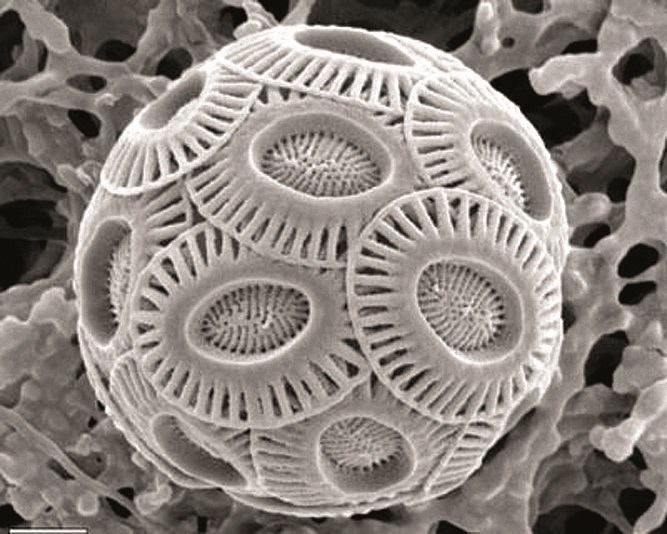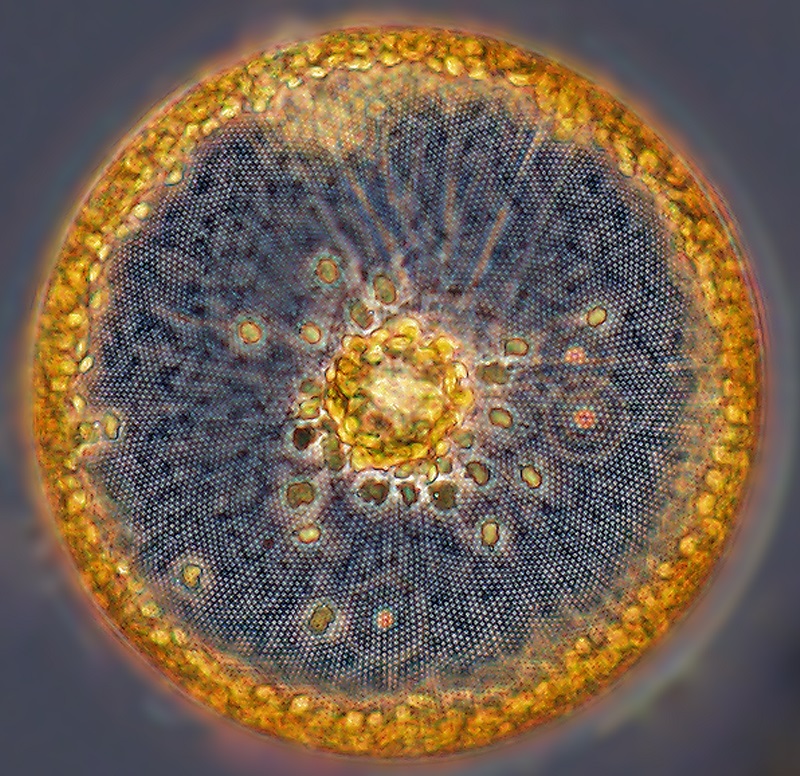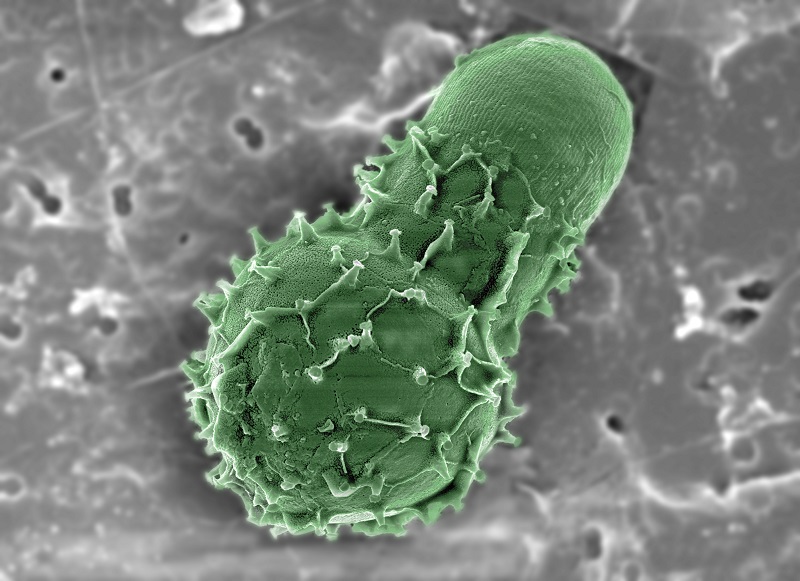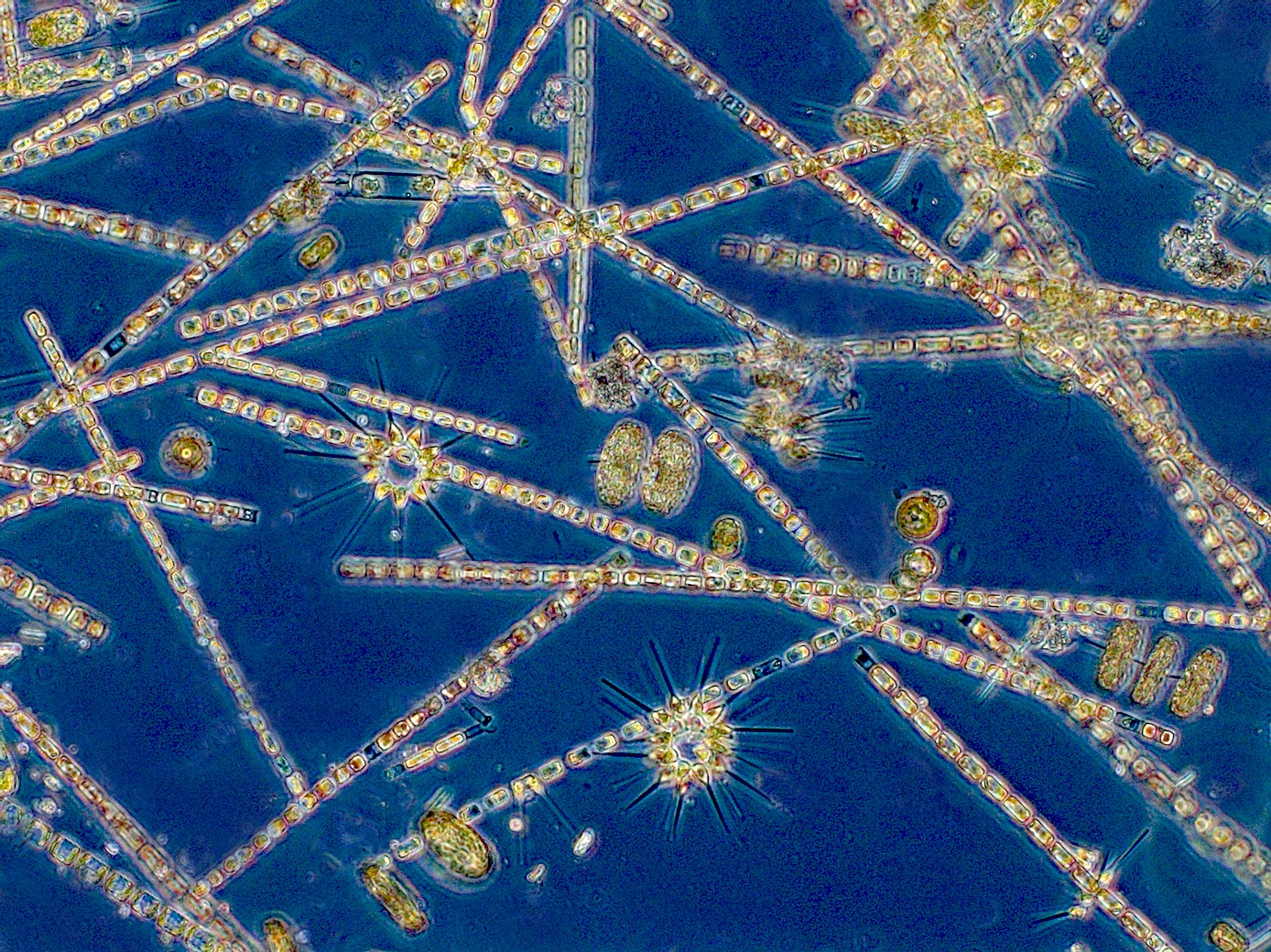Tiny Marine Microbes Dazzle in Microscopic Photo Exhibit
They're invisible to the naked eye, but vital to life on Earth. Tiny microbes make up the backbone of the marine ecosystem, supplying about half of the oxygen that humans and other animals breathe. Now, a new photography exhibit will show off these organisms on a macro scale.
Scientists from Bigelow Laboratory for Ocean Sciences and the New England Aquarium will present the collection of images, called "Tiny Giants: Marine microbes revealed on a grand scale," at District Hall in Boston on Jan. 15. The following images are some of the pieces that will be on display.
This microbe is a chain-forming diatom that acts as a food source for newly hatched fish. It belongs to the genus Thalassiosira and was the first singe-celled algae to have its genome sequenced. (Credit: Laura Lubelczyk, Bigelow Laboratory of Ocean Sciences)
This species called Emiliania huxleyi is highly sensitive to ocean acidification. The organism gives the White Cliffs of Dover their shiny white color. (Credit: Dolors Blasco, Institut Ciències del Mar, CSIC)
Green chloroplasts are sprinkled throughout the layers of this circular diatom (called Coscinodiscus). These organisms use chloroplasts to soak up energy from the sun. Engineers are using this microbe as a model for future solar panel designs. (Credit: Peter Countway, Bigelow Laboratory for Ocean Sciences)
Some marine snails swim around the ocean using feet that have been modified into winglike structures. They are nicknamed "sea butterflies" because they swim with a gentle, flapping motion. Krill and other small fish feast on these microscopic snails. (Credit: Laura Lubelczyk, Bigelow Laboratory for Ocean Sciences and Erica Goetze, University of Hawaii)
Young fish and invertebrates feast on these small animals called copepods. At night copepods swim to the surface to chow down on phytoplankton, but during the day they dive back down to hide from predators. (Credit: Peter Countway, Bigelow Laboratory for Ocean Sciences)
Get the world’s most fascinating discoveries delivered straight to your inbox.
Scientists have no idea what this green microbe is. Its mysterious identity is not that surprising, since less than five percent of the ocean has been explored and just one drop of water holds thousands of microbes. Scientists think it may be a dinoflagellate shell or it might even be a small piece of pollen from the shore. (Credit: Laura Lubelczyk, Bigelow Laboratory for Ocean Sciences)
Phytoplankton form the base of the marine food chain. They cover the surface of the ocean, but are invisible to the naked eye. (Credit: Peter Countway, Bigelow Laboratory for Ocean Sciences)
This kind of microbe, called a salp, can eat anything ranging in size from small phytoplankton to large bacteria-size pieces of food. Their wide-ranging diet allows them to grow quickly, and they are capable of cleaning out an area's entire stock of phytoplankton. (Credit: Nick Record, Bigelow Laboratory for Ocean Sciences)
This pink-speckled microbe can capture and eat other cells by secreting a gooey envelope that surrounds and digests its prey. (Credit: Peter Countway, Bigelow Laboratory for Ocean Sciences)
Follow Kelly Dickerson on Twitter. Follow us @livescience, Facebook & Google+.












